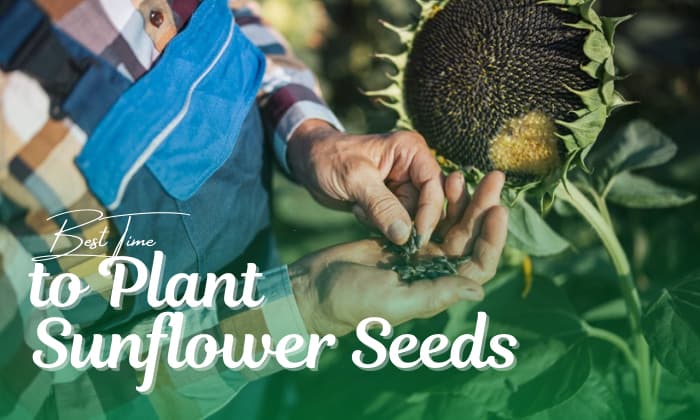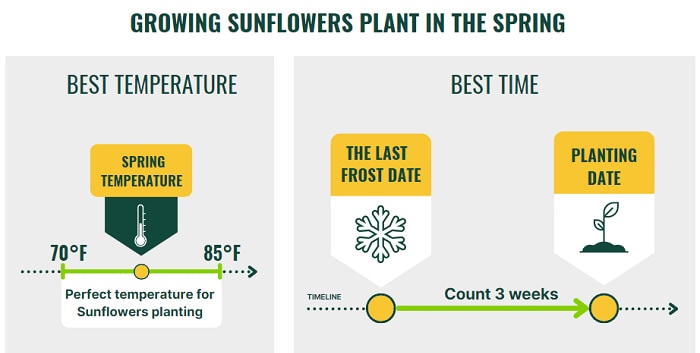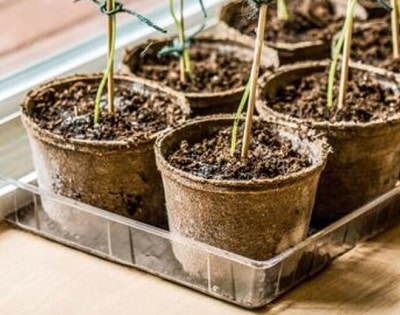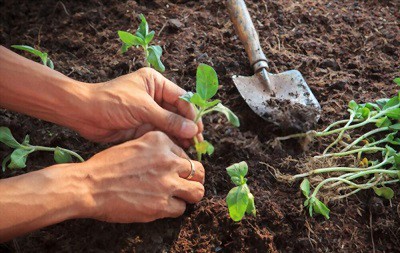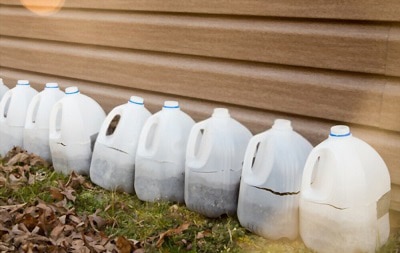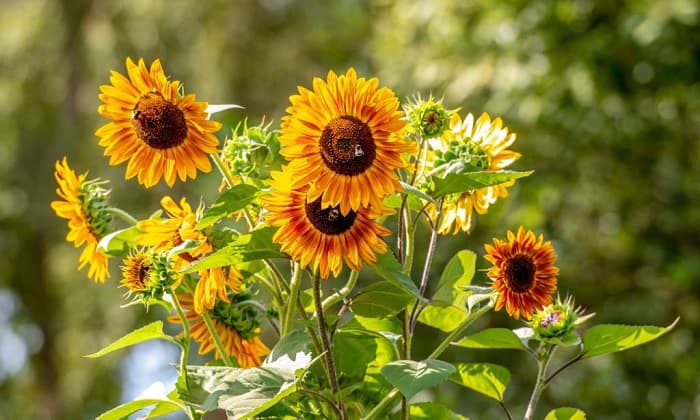Though not as popular as roses, sunflowers can convey affection just as well. These blossoms have been used to celebrate wedding anniversaries and Valentine’s day, owing to their meanings as symbols of adoration, loyalty, and longevity.
If you often gift sunflowers to others, growing them is a nice thing to consider. But when is the best time to plant sunflower seeds? It’s best to sow them from April to July in the north and around March to April in the south.
Table of Contents
When Should Sunflowers Be Planted?
Sunflower planting season is ideally spring or fall.
In the spring, you can start seeds outside three weeks after the last frost. Those who prefer to garden indoors can sow sunflowers earlier, about two to four weeks before the weather warms up.
In either case, the soil temperature should be at least 50℉ to facilitate germination, with 70 to 85 degrees being the optimal range.
As for growing sunflowers in the fall, just make sure they mature before the first frost arrives.
Their buds and flower heads are susceptible to cold damage, and you may find yourself without seeds if the flowers experience frost exposure at this stage. Unless the plant is completely mature, sub-zero temperatures will affect yield.
As a result, to grow sunflowers successfully, look up the maturation period of your cultivar and count backward from the first frost. Generally, it’ll take around 80 to 120 days for sunflowers to mature fully.
Read more: The best time to plant sunflowers in US states such as Texas, North Carolina and etc.
Growing Different Types of Sunflower Seeds
Sunflowers generally fall under two categories: annual and perennial. Since we’re talking about sunflower seeds here, it’s essential to note that perennial types don’t grow true to seeds and are best cultivated from transplants.
Regardless, it’s possible to seed perennials with the right timing. Similar to annuals, they should be grown outdoors after the last frost, as recommended above. Note that some sunflower seeds, particularly perennials, may sprout faster with stratification.
Maximilian sunflowers, for instance, will germinate more quickly with six weeks of refrigeration. Your seed package should have instructions for this task if it’s required, but generally, you can stratify seeds for thirty days inside the fridge, eight to ten weeks before the final frost.
How to Plant Sunflower Seeds?
Now that you know the growing season for sunflowers, here are some quick tips on planting them.
1. Plant in spring and fall
Grow sunflowers in pots
Prepare biodegradable containers that measure three to four inches in diameter. These are better than regular plastic or terracotta pots, as they will minimize transplant shock once you put sunflowers in the ground.
Fill the containers with a high-quality general-purpose potting mix and sow seeds at a depth of ½ inch. You can put multiple seeds in one pot if you want, but you’ll need to thin them down to one plant later.
As a rule, the seedling with the most robust stems should be kept, and thinning should take place when the plants are three to four inches in height.
When starting sunflower seeds indoors, harden the sprouts off for seven days prior to transplanting. Doing so will help sunflowers adapt to the environment outside and experience less disturbance.
Grow sunflowers in the ground
Sunflowers prefer rich, loamy, and well-drained soils with a pH of 6 to 7.5. Ensure you satisfy these conditions, then mix compost or a slow-release fertilizer into the ground and dig holes that are six inches apart.
Sow your sunflower seeds at a depth of 1 to 2 inches in rows with 30 inches of spacing between them. Similar to planting sunflowers in containers, you can put multiple seeds in the same spot, provided you thin them down to one plant per hole eventually.
Layer soil on top of the seeds after sowing, and water them from a distance of three to four inches until the ground is damp.
2. Winter sow sunflowers
While the previous methods will work in spring and fall, winter sowing requires a different dedicated technique.
As for why, the cold season is not ideal for growing sunflowers, and seeds planted during this time are less likely to survive until spring. However, you can try your luck with these tips:
- Find an empty milk jug and make a cut at the ⅓ point of the jug’s height (measure from the bottom). Don’t separate the jug into two halves entirely; leave a few inches untouched so you can reattach them later.
- Next, poke some small holes at the container’s bottom—make sure the holes are large enough for water to escape. Then, fill 75% of the receptacle with soil.
- Put sunflower seeds in the soil at a depth of one inch with an equal amount of spacing.
- Water the soil and tape the milk jug before putting your work in a sheltered location. Provided you sow winter sunflowers in November to February, there’s a chance they may germinate in spring.
Caring for and Harvesting Sunflowers
1. How to care for sunflowers
- Give sunflowers six to eight hours of direct sunlight every day and an inch of water per week.
- Mulch the soil with straw or bark to control weeds, but make sure the mulch doesn’t touch the sunflower stalks.
- Tie 15-foot-tall sunflowers to wooden stakes using fabric. These stakes will keep the sunflowers upright if the planting location is windy or the flower heads are too big.
- Use netting to deter birds, squirrels, and snails, plus surround the plants with chicken wires to stave off deer.
- Control pests like thrips and aphids with diluted dish soap. A mixture of baking soda and water may also reduce black spots and powdery mildew. Limit pesticide usage to enable effective pollination.
- If you use fertilizers, opt for low-nitrogen formulas to avoid excessive leafing and weakening the flower stalks.
2. How to harvest sunflowers
There are two things to collect when it comes to sunflowers, the blossoms themselves or the seeds.
- The seeds are harvestable when the flowers turn brown at the back and the leaves start to die. These signs also mean that the seeds are completely ripe. In this case, you only need to cut the sunflower heads off and rub them to dislodge the goods.
If you do not want to wait until ripening is complete, cut the flower heads when two-thirds of the seeds are ready (in appearance, they should be plump and black, with or without white coloring).
Hang the sunflower heads upside down in a warm area with air circulation and wait for them to dry. Also, remember to envelop the head with paper before doing this.
Note that fully ripened heads should have one inch of stem after cutting, while partially ripe ones should have at least three inches of stalk.
- Regarding the blossoms, you should pick them much earlier than the seeds, before the buds open rather than after they have died. A few hours before harvesting, water the plants to make them last longer once cut.
Cut the main stem at a slanted angle in the morning to collect sunflowers and dunk the stalks in water immediately afterward.
Your sunflower plant indoors should be displayable for at least a week, provided you give it new water daily.
FAQs
Do sunflowers come back year after year?
Sunflowers come back every year if they are perennials. Examples of such varieties include the Soluna Lemon, Maximilian, and Swamp sunflowers.
Annual cultivars, on the other hand, will need reseeding after they die. These types include the Mardi Gras, Moonshine, and Mongolian Giant varieties.
Should I soak sunflower seeds before planting?
Yes. Soaking seeds before planting will accelerate germination. You can put your sunflower seeds in water for eight hours prior to sowing, but if there is no glass or container at hand, folding them in a wet towel should suffice.
How late can you plant sunflowers?
For the most part, the latest time for growing sunflowers is in July or August. You can deduct your sunflower’s days to maturity from the first frost where you live. The result will be your final planting date.
How long do sunflowers take to grow?
Sunflowers will mature in 80 to 120 days, though there are outliers that don’t fall within this estimate. Big Smile sunflowers may finish growing in 60 days, for instance, while Teddy Bear plants often need 75 days.
Conclusion
When is the best time to plant sunflower seeds? The answer should be apparent by now. Grow them in spring and fall for a harvest in June or in September/November at the latest.
Should you have any further questions on planting sunflowers, leave us a message. We’d love to hear from our readers.

Hi, I am William – Floridayards’ digital content creator. My job is to find answers to all your concerns with thorough research and our team’s expert advice. I will also bring you honest reviews on the best products and equipment for raising your beautiful garden. Please look forward to our work!


